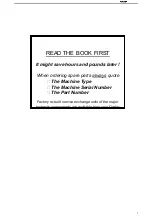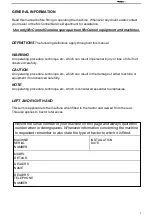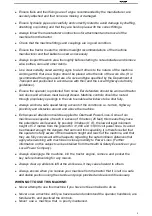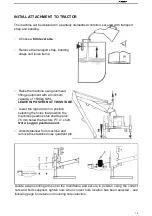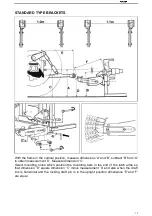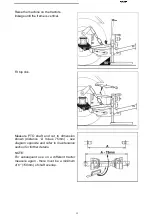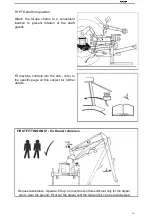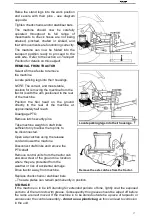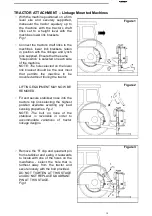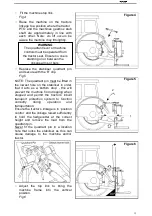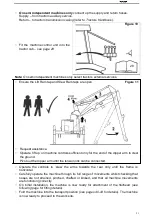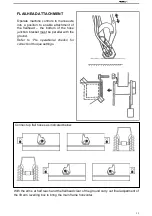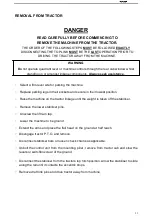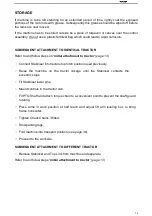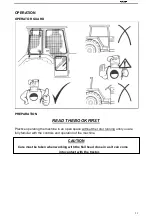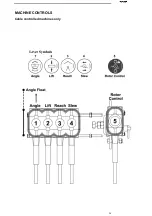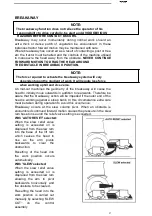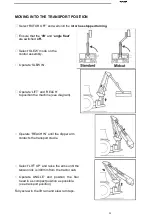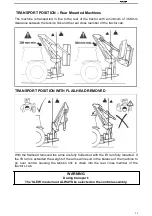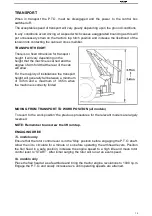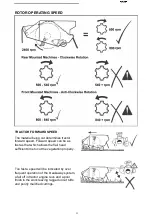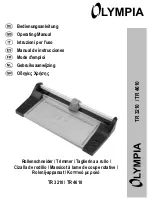
17
Raise the stand legs into the work position
and secure with their pins -
see diagram
opposite.
Tighten check chains and/or stabiliser bars.
The machine should now be carefully
operated throughout its full range of
movements to check hoses are not being
strained, pinched, chafed or kinked, and
that all movements are functioning correctly.
The machine can now be folded into the
transport position ready to proceed to the
work site
- Refer to the section on Transport
Position for details on this subject.
REMOVAL FROM TRACTOR
Select a firm safe site to remove
the machine
Locate parking legs into their housings.
NOTE:
The correct, and most stable,
position for removing the machine from the
tractor is with the arm positioned to the rear
of the machine.
Position the flail head on the ground
directly to the rear of the machine at
approximately half reach.
Disengage PTO.
Remove latch security pins.
Take machine weight on draft links
sufficient only to allow the top link to
be disconnected.
Open axle catches using the release
cord and lower the machine.
Disconnect draft links and remove the
PTO shaft.
Remove control units from the tractor cab
and stow clear of the ground in a location
where they are protected from the
weather or risk of accidental damage.
Drive tractor away from machine.
Locate parking legs into their housings.
Remove the axle catches from the tractor
.
Replace check chains / stabiliser bars
–
The axle plates can remain permanently in position.
STORAGE
If the machine is to be left standing for extended periods of time, lightly coat the exposed
portions of the ram rods with grease. Subsequently this grease should be wiped off before
the rams are next moved. If the machine is to be stored outside tie a piece of tarpaulin or
canvas over the control assembly -
do not use a plastic bag
as this can lead to corrosion
in the unit.

